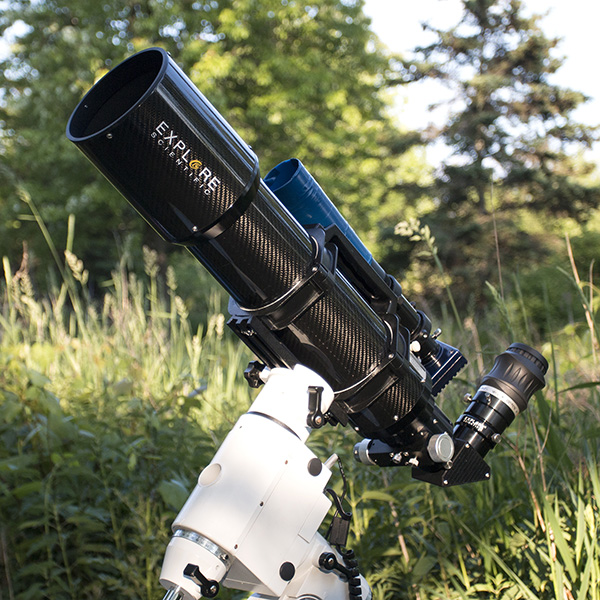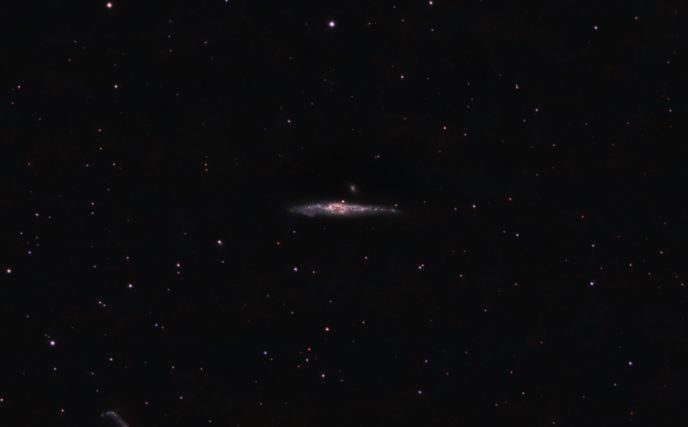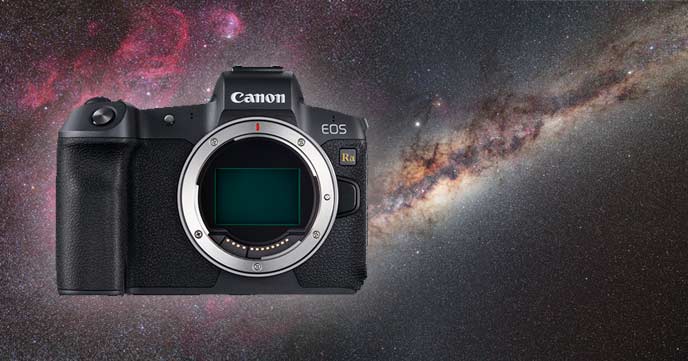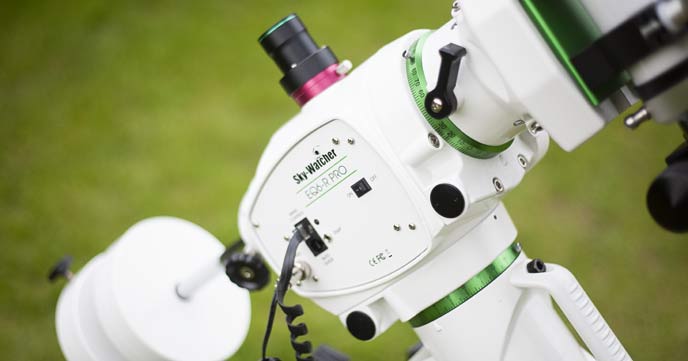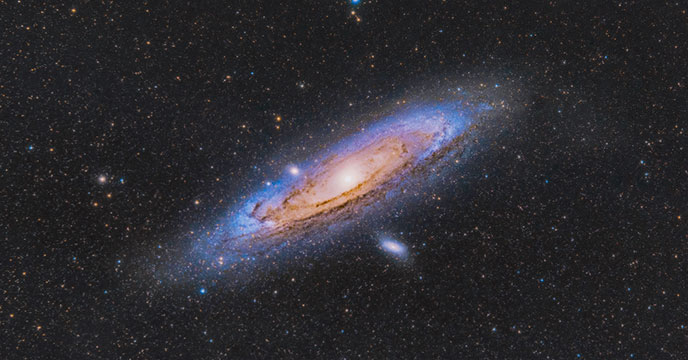New Astrophotography Telescope
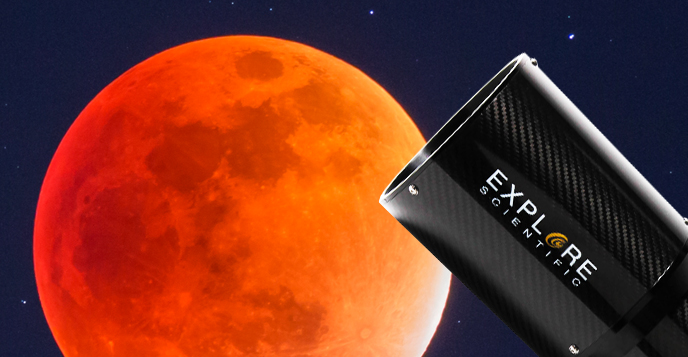
I am thrilled to announce the purchase of a brand new telescope for astrophotography, and one that I’ve had my eye on for some time.
Those of you looking to dive into the hobby of deep-sky astrophotography for the first time should see my post a choosing a telescope for astrophotography. I break down my top 5 choices for a beginner, which includes the 80mm version of the telescope mentioned below. Spoiler alert, they’re all refractors!
It’s a very exciting time of year for astrophotographers with the return of the central bulge of the milky way in our night sky (in the Northern Hemisphere).
I’ve got astronomy camping trips booked for June, July, and August – as well as some time off at work so I can spend more time in the backyard under the stars. With that being said, I’ve decided to invest in some new astrophotography equipment that will hopefully lead to some incredible new astrophotos this summer.
Let’s start with the most exciting purchase I’ve made this year.
Explore Scientific ED102 Carbon Fiber
102mm F/7 Triplet Apochromatic Refractor

That’s right, I loved the Explore Scientific ED80 so much that the next logical move was to step up to the slick black carbon fiber 102mm version. Many of you are like me and do not have a large budget for astrophotography gear.
With so many astrophotography telescopes available, you better believe I did my homework first! This triplet “APO” has received top marks from many deep-sky astrophotographers and was even my number 1 choice on my old “Top Astrophotography Telescopes Under $2,000” post.
This telescope from Explore Scientific is considered to be a wide-field instrument, but the increased focal length of 714mm is a big step up from the 480mm on my 80ED.
So what finally provoked me to take the plunge? Well, the team at Explore Scientific reached out to me after finding this blog! I was invited to provide a testimonial about my beloved ED80 APO as well as share some of my astrophotography images on their website, social media networks, and Sky’s Up Magazine.
Related Post: Explore Scientific ED102 CF Review
Telescope Specifications
Focal Length: 714mm
Focal Ratio: f/7
Resolution: 1.14 arcsec
Diameter: 120mm
Weight: 7 lbs
Dovetail: Vixen
New Astronomik 12nm Ha Filter
This is another long-time coming item that I have had my eye on for years. I will now be able to capture some Hydrogen Alpha data through my light-polluted skies in the backyard. This filter also blocks out the glow from the full moon, so it will be interesting to see how much extra imaging I will be able to get in!
The Clip-in version for Canon EOS DSLR’s will fit snugly into my Modified 450D, replacing the IDAS LPS filter. I believe a DSLR Ha filter is a great investment, even if you’re using a color camera.
I will shoot my regular RGB data using the LPS filter, and add in some powerful Ha data to overlay in post-processing. I am really excited to see how it reduces the star glow in my images as well.
I ordered this filter from OPT telescopes today, and it should be arriving in as early as two weeks. Some of my favorite astrophotographers from around the web have used this filter and gotten impressive results.
Below, you’ll see my photo of the Soul Nebula using the Astronomik 12nm Ha Filter clipped into a Canon EOS Rebel T3i DSLR camera.
AstroBackyard on YouTube
I am blown away by the response from my YouTube channel. In the latest video posted from my backyard, I mentioned how I couldn’t believe that I had almost 70 subscribers – that number has since jumped to almost 450 in about 1 month’s time.
Needless to say, I couldn’t be more inspired to make new astrophotography videos and share them with my YouTube audience. The comments and feedback from the videos have been very humbling, and confirm my efforts of making this website. It is already becoming hard to keep up with all of the astrophotography questions I am receiving on YouTube, which leads me to my next point.
Frequently Asked Questions Section
I now receive anywhere from 3-10 e-mails a day asking different astrophotography related questions. I am always happy to help beginner astrophotographers get started, but my time is very limited. I have decided to use this opportunity to build out a Frequently Asked Questions section of this website.
This way, we can all learn from each other. This will also build out a helpful resource page that includes many of the most commonly asked questions about astrophotography. I will likely divide the page up into subsections including equipment, software, acquisition, and processing questions.
Latest Imaging Session
I am currently taking my last number of images using my trusty ED80 – Is it weird that I feel emotional about that? My deal with Explore Scientific includes exchanging the ED80 for the new 102mm.
This means that I will likely do my imaging with the 8″ Orion Astrograph while I wait for the ED102 to arrive. I did not shoot any deep-sky images during the last new moon because of an annual birding trip my Fiance and I go on.
However, I have begun shooting some frames on NGC 4631 – the Whale Galaxy from the backyard. My first set of frames are not pretty, as they were shot under the bright glow of a 89% illuminated waning gibbous moon. I am hoping to capture another hour or two of this object tonight if the weather cooperates.
2016-06-01 – Update!
I have imaged the Whale Galaxy for 4 nights (totaling 3 hours and 52 Minutes of Exposure) The signal to noise ratio has improved greatly, and you can view my final image here.
Related Posts:
- Explore Scientific ED80 Review
- How a DSLR Ha Filter can Improve your Astrophotos
- Deep Sky Astrophotography Beginners Guide
